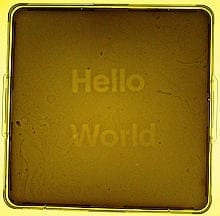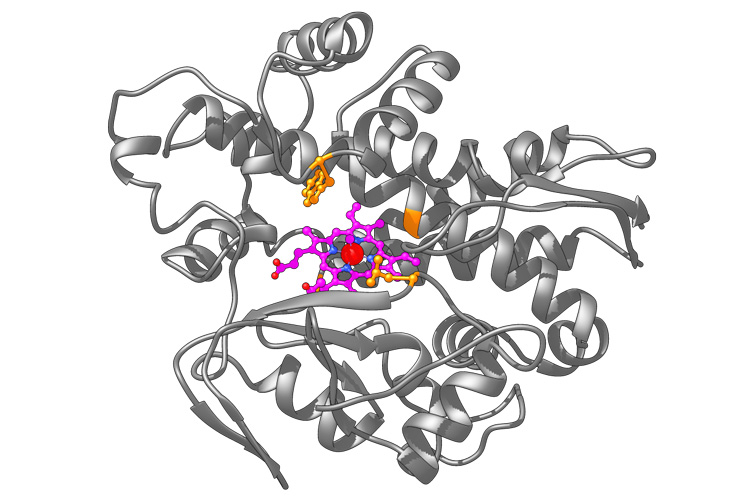
Update to synthetic biology map identifies new activity across the globe
The number of private and public entities conducting research in synthetic biology worldwide grew significantly between 2009 and 2013, according to the latest version of an interactive map produced by the Synthetic Biology Project at the Woodrow Wilson International Center for Scholars. The map is available online at http://www.synbioproject.org/map.
Synthetic biology, an area of research focused on the design and construction of new biological parts and devices, or the re-design of existing biological systems, is an emerging field and the focus of labs and companies around the world. The map, which builds on work the project started in 2009, is populated with more than 500 companies, universities, research institutions and other entities working on synthetic biology, showing clusters of activity in California, Massachusetts, Western Europe and East Asia.
“Part of this new activity has been driven by continuing government investments in the science,” said David Rejeski, who directs the Synthetic Biology Project. “Another important factor has been the rapidly declining costs of gene sequencing, which has supported more effective approaches to engineering biological systems.”
The Synthetic Biology Project found that the number of companies conducting synthetic biology research increased three-fold since 2009. A plurality of the companies involved in synthetic biology is focusing on developing bio-based specialty chemicals, fuels and/or medicines.
Since 2009, the industry has also experienced moderate levels of consolidation and failure. Of the 61 companies included on the initial 2009 inventory, six were acquired by other companies, closed their doors or can longer be identified. An additional 11 companies that were tracked between the release of the 2009 inventory and the 2013 update were also acquired, closed or cannot be identified.
The Latest Bing News on:
Synthetic biology
- First-batch alumna Jaya Deshmukh named new Mica directoron April 30, 2024 at 4:54 pm
Mica announces the appointment of Jaya Deshmukh as the new director, a first-batch alumna with a background in tech giants like Google and Microsoft. She is set to take charge in July, bringing ...
- Transcript: World Stage: Chinaon April 30, 2024 at 1:49 pm
Welcome to Washington Post Live. I’m David Ignatius, a columnist at The Post. Today I'm pleased to be joined by Dmitri Alperovitch, the co-founder of the cybersecurity firm CrowdStrike, co-founder of ...
- An AI model to reduce uncertainty in evapotranspiration predictionon April 30, 2024 at 12:37 pm
When scientists look at the Earth's available water for ecosystem services, they don't just look at precipitation. They must also account for water moving from the ground to the atmosphere, a process ...
- Four myths about vertical farming debunked by an experton April 30, 2024 at 10:01 am
Vertical farms look hi-tech and sophisticated, but the premise is simple—plants are grown without soil, with their roots in a solution containing nutrients. This innovative approach to agriculture is ...
- BioP2P’s Matt Gardner to Speak at SynBioBeta Global Synthetic Biology Conferenceon April 30, 2024 at 9:03 am
Matt Gardner, Board President of the California Biomanufacturing Center and Chair of the BioProcess to Product Network (BioP2P), is scheduled to speak at the 2024 SynBioBeta Global Biology Conference.
- Ansa Biotechnologies to Showcase Early Access Customer Success at Upcoming Global Synthetic Biology Conferenceon April 30, 2024 at 5:03 am
Ansa Biotechnologies, Inc., the trusted partner for complex DNA synthesis, today announced its speaker lineup for presentations at the upcoming Global Synthetic Biology (SynBioBeta) Conference in San ...
- Asimov achieves 10x improvement in lentiviral production, launches new stable cell line development serviceon April 30, 2024 at 12:04 am
Asimov, the synthetic biology company advancing the design and manufacture of therapeutics, today announced the expansion of its LV Edge System with the launch of a fully stable cell line ...
- ARPA-H leaders to participate in Johns Hopkins Health Policy Forum discussionon April 29, 2024 at 2:01 pm
School of Medicine Dean Theodore DeWeese will lead a conversation with Renee Wegrzyn, director of the Advanced Research Projects Agency for Health, and Kimberley Steele, ARPA-H program manager, on Apr ...
- Synthetic droplets cause a stir in the primordial soup: Chemotaxis research answers questions about biological movementon April 25, 2024 at 7:14 am
Simple yet profound questions like these are at the heart of curiosity-driven basic research, which focuses on the fundamental principles of natural phenomena. An important example is the process by ...
- “Truly Amazing” – Quantum Dots Successfully Synthesized Inside Living Cells!on April 24, 2024 at 11:43 pm
A recent study published in the journal National Science Review demonstrates the synthesis of quantum dots (QDs) in the nucleus of live cells. The research was conducted by Dr. Hu Yusi, Associate ...
The Latest Google Headlines on:
Synthetic biology
[google_news title=”” keyword=”Synthetic biology” num_posts=”10″ blurb_length=”0″ show_thumb=”left”]
The Latest Bing News on:
Synthetic biology research
- BioP2P’s Matt Gardner to Speak at SynBioBeta Global Synthetic Biology Conferenceon April 30, 2024 at 9:03 am
Matt Gardner, Board President of the California Biomanufacturing Center and Chair of the BioProcess to Product Network (BioP2P), is scheduled to speak at the 2024 SynBioBeta Global Biology Conference.
- USC Scientists Rewrite Kidney Research With Groundbreaking Cell Cultivationon April 30, 2024 at 8:00 am
Researchers at USC have advanced kidney research by developing a new method to cultivate nephron progenitor cells from human stem cells. This method simplifies the process and enhances applications in ...
- Ansa Biotechnologies to Showcase Early Access Customer Success at Upcoming Global Synthetic Biology Conferenceon April 30, 2024 at 5:03 am
Ansa Biotechnologies, Inc., the trusted partner for complex DNA synthesis, today announced its speaker lineup for presentations at the upcoming Global Synthetic Biology (SynBioBeta) Conference in San ...
- ARPA-H leaders to participate in Johns Hopkins Health Policy Forum discussionon April 29, 2024 at 2:01 pm
School of Medicine Dean Theodore DeWeese will lead a conversation with Renee Wegrzyn, director of the Advanced Research Projects Agency for Health, and Kimberley Steele, ARPA-H program manager, on Apr ...
- Synthetic droplets cause a stir in the primordial soup: Chemotaxis research answers questions about biological movementon April 25, 2024 at 7:14 am
Simple yet profound questions like these are at the heart of curiosity-driven basic research, which focuses on the fundamental principles of natural phenomena. An important example is the process by ...
- “Truly Amazing” – Quantum Dots Successfully Synthesized Inside Living Cells!on April 24, 2024 at 11:43 pm
A recent study published in the journal National Science Review demonstrates the synthesis of quantum dots (QDs) in the nucleus of live cells. The research was conducted by Dr. Hu Yusi, Associate ...
- Self-assembling synthetic cells act like living cells with extra abilitieson April 23, 2024 at 5:00 pm
Blurring the line between artificial and living materials, these cells can be reprogrammed to perform multiple functions, opening the door to new synthetic biology tech that goes beyond nature’s ...
- Shanghai Opens Synthetic Biology Innovation Centeron April 15, 2024 at 12:39 am
(Yicai) April 15 -- Shanghai has unveiled the Shanghai Synthetic Biology Innovation Center to promote scientific and technological exchange and cooperation in the industry.
- Shanghai establishes synthetic biology innovation centeron April 14, 2024 at 10:16 pm
Shanghai Synthetic Biology Innovation Center was unveiled Sunday in a bid to promote innovation and development of this future industry of the easter ...
- DNA nanotube rings: Research team develops important building block for artificial cellson March 25, 2024 at 10:03 am
During cell division, a ring forms around the cell equator, which contracts to divide the cell into two daughter cells. Together with researchers from Heidelberg, Dresden, Tübingen and Harvard, ...
The Latest Google Headlines on:
Synthetic biology research
[google_news title=”” keyword=”synthetic biology research” num_posts=”10″ blurb_length=”0″ show_thumb=”left”]











